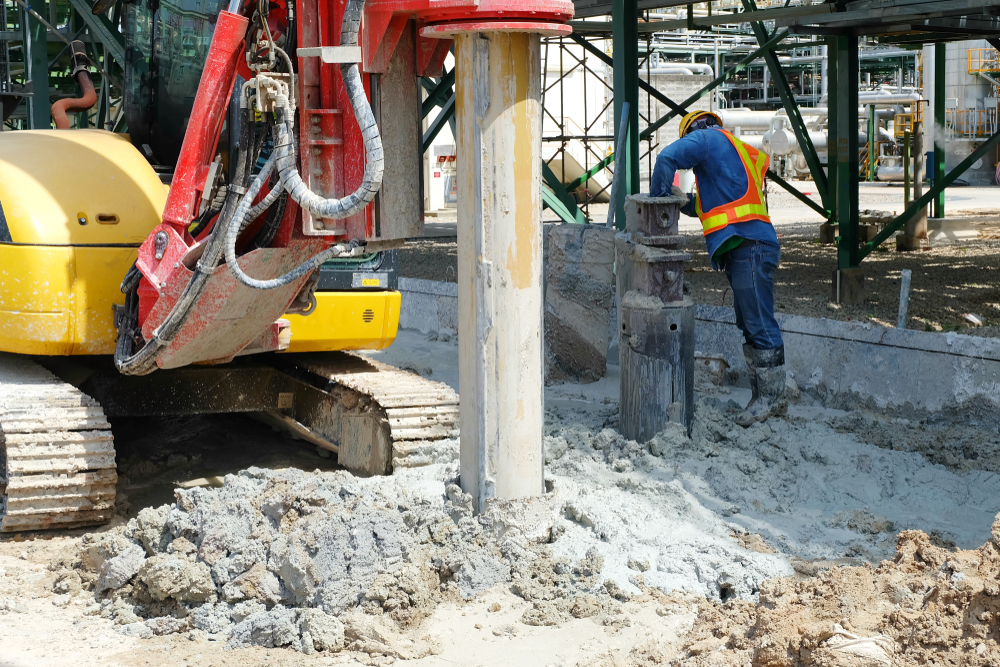See This Report about Specialized Geotechnical Engineering Solutions
See This Report about Specialized Geotechnical Engineering Solutions
Blog Article
Get This Report about Specialized Geotechnical Engineering Solutions
Table of ContentsOur Specialized Geotechnical Engineering Solutions DiariesThe 15-Second Trick For Specialized Geotechnical Engineering SolutionsSpecialized Geotechnical Engineering Solutions Things To Know Before You Get ThisSpecialized Geotechnical Engineering Solutions Fundamentals ExplainedSome Known Details About Specialized Geotechnical Engineering Solutions How Specialized Geotechnical Engineering Solutions can Save You Time, Stress, and Money.
William Rankine, a designer and physicist, created an alternative to Coulomb's planet pressure concept. Albert Atterberg created the clay consistency indices that are still used today for dirt category. In 1885, Osborne Reynolds acknowledged that shearing causes volumetric expansion of dense materials and tightening of loose granular materials. Modern geotechnical design is claimed to have begun in 1925 with the magazine of Erdbaumechanik by Karl von Terzaghi, a mechanical engineer and geologist. Terzaghi also established the framework for concepts of birthing ability of foundations, and the theory for forecast of the rate of negotiation of clay layers because of debt consolidation. Afterwards, Maurice Biot completely created the three-dimensional dirt combination concept, extending the one-dimensional design formerly established by Terzaghi to more general theories and presenting the collection of basic equations of Poroelasticity.
Geotechnical engineers examine and establish the homes of subsurface conditions and materials.
Facts About Specialized Geotechnical Engineering Solutions Revealed
Geologic mapping and interpretation of geomorphology are generally completed in assessment with a geologist or design geologist. Subsurface expedition generally involves in-situ screening (for instance, the conventional penetration test and cone infiltration examination). The digging of examination pits and trenching (specifically for finding mistakes and slide airplanes) might likewise be used to discover about dirt problems at depth. Still, they are sometimes used to allow a geologist or designer to be lowered right into the borehole for straight aesthetic and manual examination of the dirt and rock stratigraphy. Various dirt samplers exist to meet the requirements of various engineering tasks. The typical penetration examination, which utilizes a thick-walled split spoon sampler, is one of the most common method to gather disturbed samples.

Typically, the interface's specific geometry is unidentified, and a streamlined user interface geometry is assumed. Finite slopes need three-dimensional versions to be analyzed, so most inclines are analyzed thinking that they are infinitely broad and can be represented by two-dimensional designs.
The Basic Principles Of Specialized Geotechnical Engineering Solutions

Measurement of amounts and evaluation of actual problems. Style adjustment per actual conditions The empirical technique is suitable for important site building and construction that has currently started when an unexpected growth occurs or when a failure or crash looms or has actually already taken place. It disagrees for projects whose design can not be modified throughout building and construction.
Principles of Geotechnical Design. Dirt Technicians and Foundations. Disturbed dirt residential properties and geotechnical style, Schofield, Andrew N., Thomas Telford, 2006.
Little Known Questions About Specialized Geotechnical Engineering Solutions.
Principles and Technique of Ground Renovation. Ground Renovation Principles And Applications In Asia. Style analysis in rock auto mechanics.
Cengage Understanding, Stamford, 666 p. Atkinson, J., 2007. The technicians of dirts and structures. The Observational Method in ground engineering principles and applications.
The Ultimate Guide To Specialized Geotechnical Engineering Solutions
These reports are customized to satisfy the particular requirements of a task and include style specifications and guidance for the construction of a variety of manufactured frameworks. As providing consultancy services covering helpful site locations such as incline security and load-bearing capacities for different materials, these designers take on research study and advancement activities to boost methodologies, equipment, materials expertise and evaluation covering entire lifecycles.
Design the buildings and mechanics of rocks consisting of the application of dynamics, liquid auto mechanics, kinematics and product technicians. This combines geology, soil and rock mechanics, and architectural design for the style and building and construction of foundations for a series of civil design tasks. This field entails forecasting the efficiency of structure soil and rock to a lots enforced by a structure, while thinking about performance, economic climate and security.
Nevertheless, rates of pay generally raise as your understanding and abilities expand, with standards indicating a graduate starting salary of between 18,000 and 28,000 each year in the UK. This increases to 26,000 to 36,000 with a few years of experience and then getting to 40,000 to 60,000+ for elderly, legal or master engineers.
The Definitive Guide for Specialized Geotechnical Engineering Solutions
Nevertheless, with the right application it is feasible to understand the career and gain entry to a tough yet fulfilling and important job. A rock hound would require to retrain to come to be a geotechnical designer, although there is lots of cross-over between the two professions, which might make this less complicated. Rock hounds need to have an understanding of dirts, rocks and various other products from a clinical perspective, while geotechnical engineers tale their knowledge of matters such as dirt and rock technician, geophysics and hydrology and use them to design and environmental tasks.
When beginning out, these engineers will certainly often tend to work with less complex projects, developing expertise and experience all set for even more challenging work later on. Geotechnical designers tend to specialise in specific locations as they grow in experience, concentrating on specific frameworks such as trains, roadways or water. These designers likewise collaborate with sustainable energy, offshore and onshore oil and gas, nuclear power, and much more.
Report this page